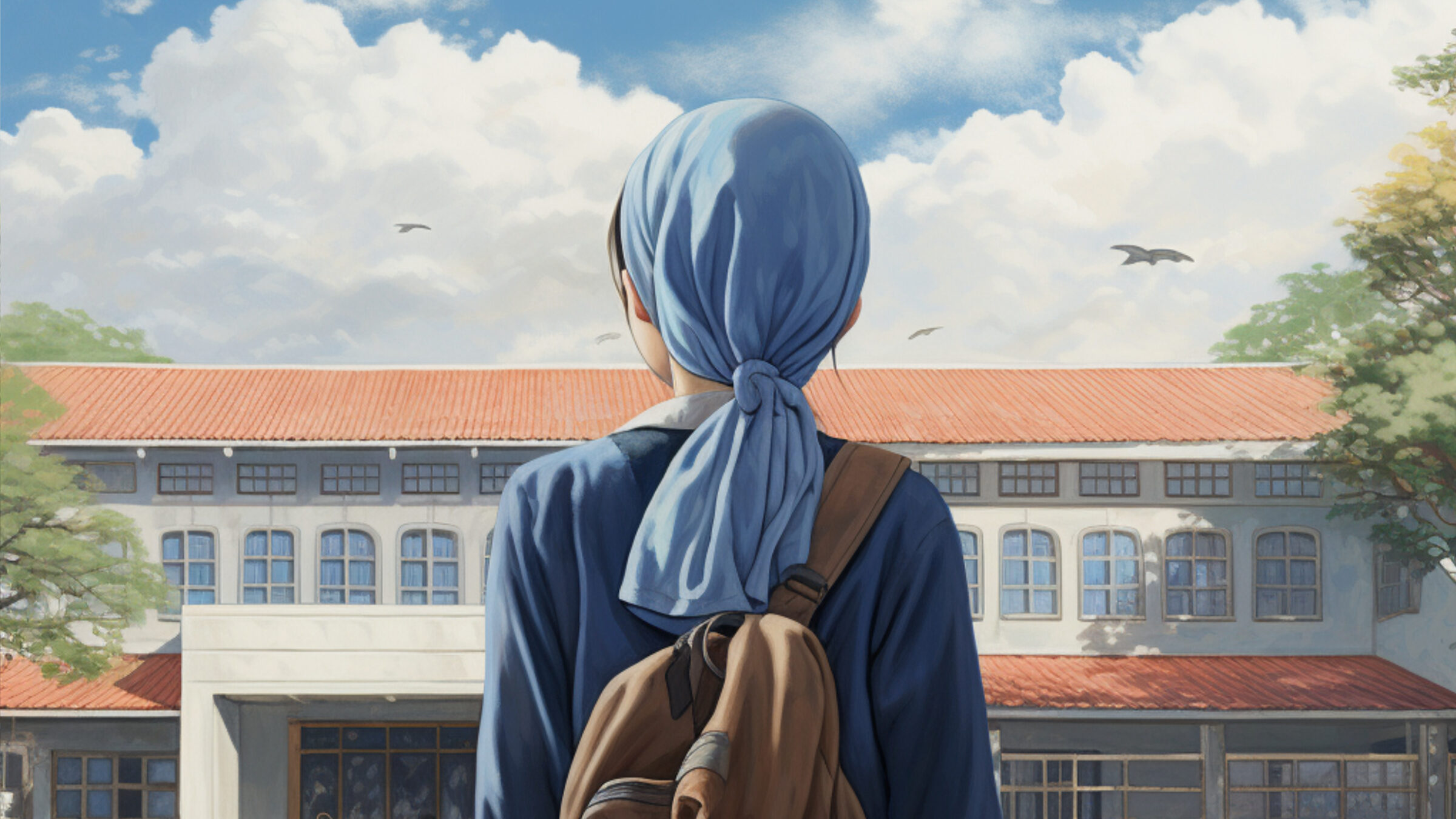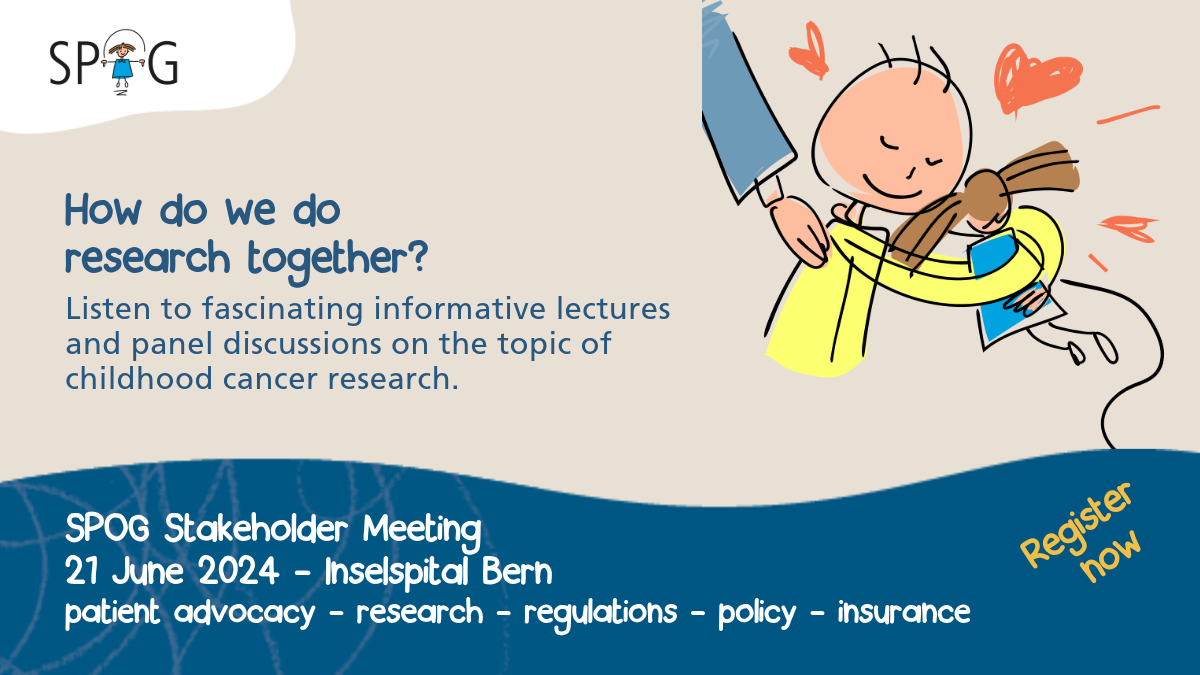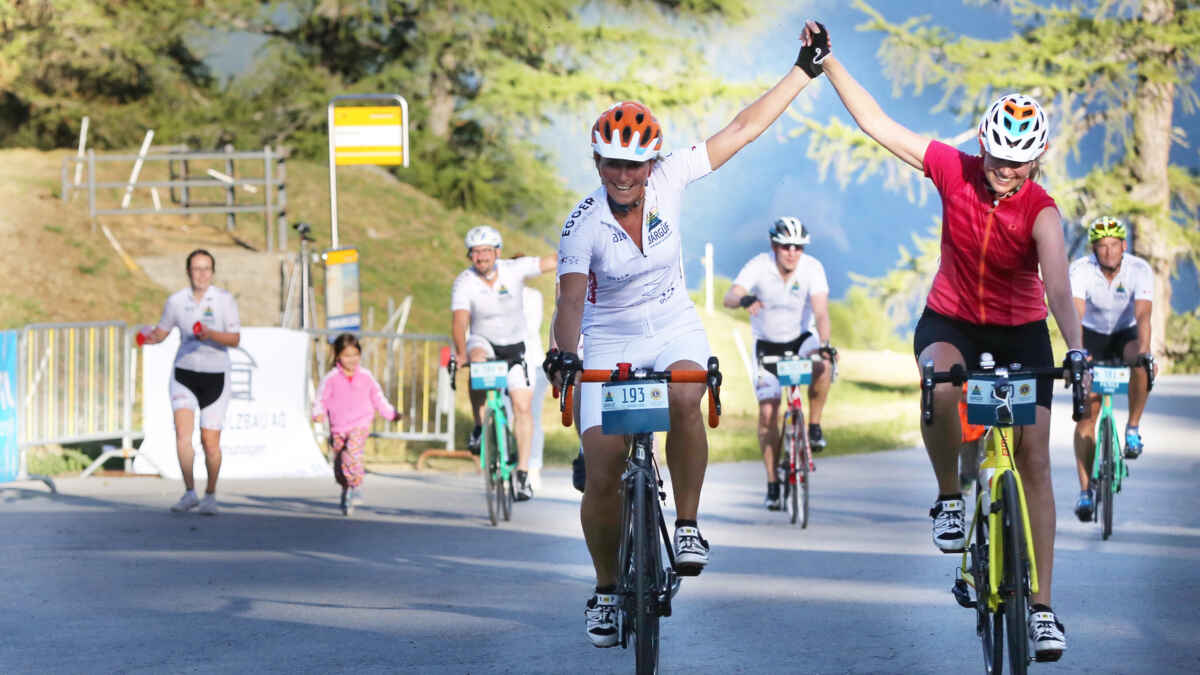Anna’s new beginning

Nine-year-old Anna* is standing in the street in front of her school. She’s playing with the corner of the blue scarf that is hanging down over her narrow shoulders.
The girl who once sported brown curls is nervous. Today is the first day after the summer holidays and the first time she’ll be seeing her school-friends since she had chemotherapy. Anna spent most of the summer holidays in hospital instead of outside like her friends. And once she was home again she was too exhausted to play with the others.
She only needs to take a few steps to reach the school, but she’d much rather turn round and hide away at home. She wishes she hadn’t insisted on coming alone. Suddenly she’s unsure whether the fine silk scarf that she chose last week really is as beautiful as she thought it was when she was still at home. What if her friends laugh at her?
Anna is not alone. In Switzerland nearly 70 infants, children and adolescents are diagnosed with leukaemia every year. Although it is a rare disease in children, it is still the most common form of cancer in childhood and adolescence in the country.
SPOG is enabling these children and adolescents to take part in the AIEOP-BFM ALL 2017 study, which is focusing on the treatment of acute lymphatic leukaemia (ALL) in this age group, so that they can be offered the best possible treatment. The objective of the study is to evaluate the efficacy and safety of different therapeutic approaches and is investigating the use of various forms of chemotherapy.
The initial findings from the study show that treatment of this form of leukaemia in children and adults can be improved if individual therapy adapted to the very specific risk factors of each patient is used.
Anna was also able to benefit from individual therapy in this study. She and other sick children and adolescents will hopefully experience fewer relapses as a result of the study findings and will be able to enjoy a greater quality of life as side effects should be reduced by the individually adapted therapy.
But that doesn’t change the fact that Anna lost her hair. Her thoughts are interrupted by a shrill noise. The bell is ringing. She lets go of her scarf and pulls herself together. She hasn’t gone more than a few paces when she feels a hand on her shoulder. Her heart leaps into her mouth. She turns round to see the delighted face of her friend Carola. “Anna! You’re back! I’ve been looking forward to seeing you so much!” Carola’s smile is infectious. Anna is already starting to feel better, takes her friend’s hand and follows her into the school playground.
Anna’s story illustrates the everyday challenges faced by many children and adolescents who have to battle cancer. By supporting the clinical research into childhood cancer carried out by SPOG, you are helping to ensure that important studies can be carried out with the aim of improving these young patients’ quality of life.
Your support makes it possible to give children and adolescents like Anna a future and for their dreams to come true. Your donation helps SPOG to continue researching and developing innovative therapeutic approaches to increase the chances of survival and quality of life for these young people.
Help to give a future to children and adolescents with cancer.
* Anna is an imaginary person who represents all children and adolescents battling cancer.



